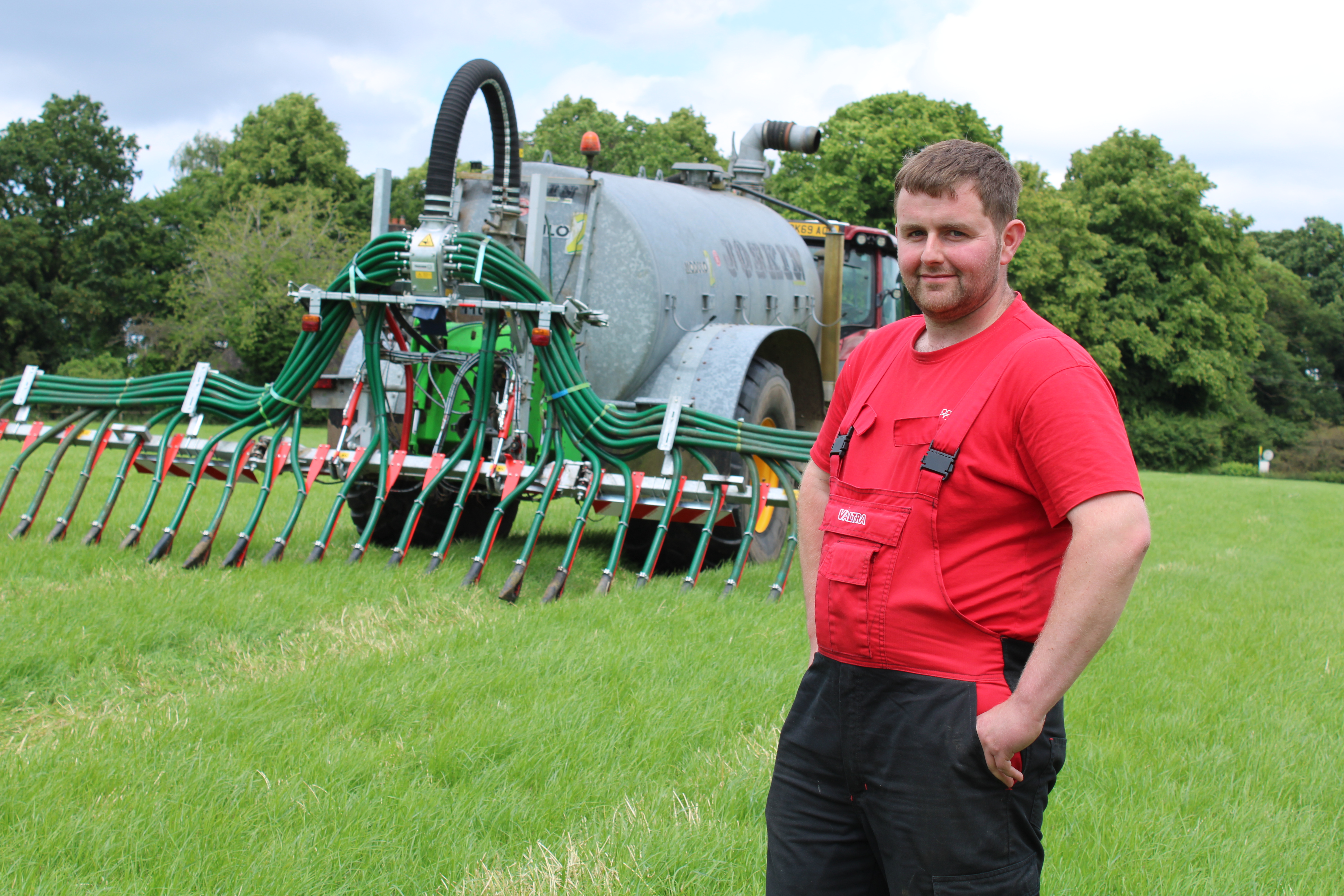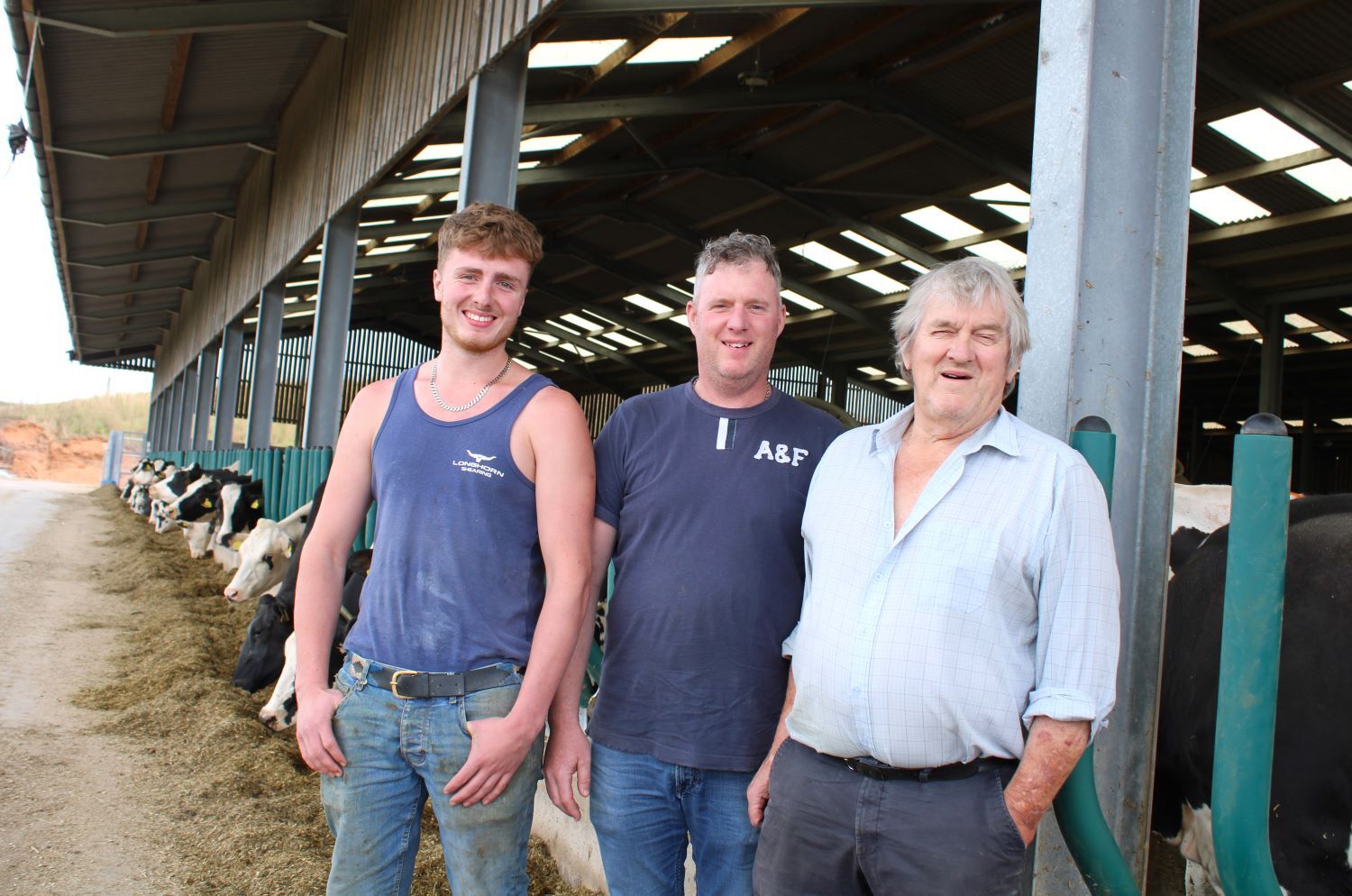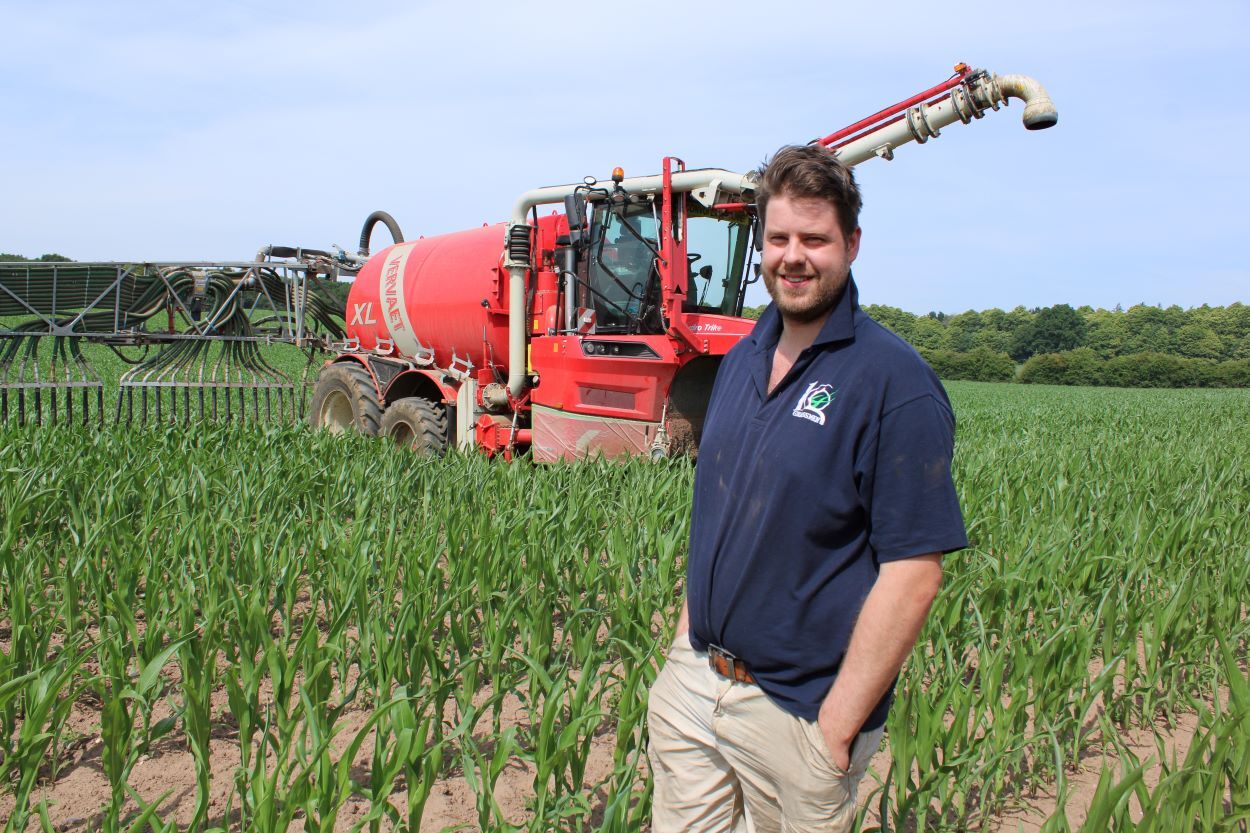How one farm makes best use of slurry with UniSpread trailing shoe

The splash plate ban has worried some and inspired others. Callum Fernihough has chosen to get ahead and make best use of slurry by using a trailing shoe applicator that is more precise to reduce his family’s reliance on bought in fertiliser.
Farming 210 acres at Lawton Hall Farm near Stoke on Trent, the Fernihough family has a mixed herd of 140 milkers that are housed all year round along with 120 followers. The farm has an onsite steel slurry tower which is linked to a reception pit via a separator. This reduces the volume being stored and provides a more homogenous slurry for grass and maize application.
“It is a screw press style separator. We have been using separation for over 20 years. It is a good way to help the quantity and quality of our slurry,” says Mr Fernihough.
He immediately refers to how the farm has struggled with application equipment saying that despite separating slurry to make it easier to apply his previous trailing shoe was prone to faults.
“The macerator in our applicator doesn’t have to work as hard as some and it should be straight forward to spread as our land is not particularly uneven or hilly. However, the last trailing shoe we had didn’t seem to follow the ground evenly and the rubber boots were prone to splitting regularly, so we chose a Vogelsang UniSpread in April 2022,” he says.
7.5m is ample for grass leys
The UniSpread is a 7.5 metre model which is ample for the way the Fernihough family has set up their grass leys, some of which are small parcels that can be tricky to access.
“The UniSpread qualified for a Farming Equipment and Technology (FETF) grant and has been a good investment. We have also invested in a Grassland subsoiler this year to go over our tramlines in our grass leys between each cut of silage. This helps to remove the build-up of compaction caused by our forage wagon and will hopefully encourage faster grass regrowth,” he says.
He suggests it is easier to use, mount and maintain with simple well located greasing points and a strong four-point linkage. However, the main benefit has been in the shoe design.
“We want to use a trailing shoe because it protects the leaf of the plant. It also enables the slurry to be absorbed into the soil and taken up faster by the plant because it can be applied in a more uniform way. On our previous machine the rubber boots only opened when ground pressure was exerted but this constant pinching of the boot caused them to split,” he says.
Making the most of spreading windows

He continues to explain that the previous trailing shoe was particularly troublesome in wet and soft ground conditions.
“Our windows are getting tighter; we are in an NVZ and we often have to apply slurry on land that is soft. Because the previous machine relied solely on ground pressure to operate, it would dig in until it found sufficient contact to set the shoe in place. On the wet land this often meant the shoe would get embedded in the soil and cause damage to the ley,” he says.
The UniSpread is a lighter weight design and despite being 1.5 metres wider than the farm’s previous trailing shoe it is easier for the Valtra T194 to manage in the areas of the farm where a local contractor is unable to apply umbilically.
“We operate a multi cut system and aim for five cuts each year. About 50 acres is inaccessible to our contractors so we use the UniSpread to cover this. It also gives us the flexibility to take every opportunity to manage our storage levels and enhance the nutrient value of our soils,” he says.
In praise of accurate slurry spreading
Whilst he appreciates that the use of splash plates is continuing until the end of 2024, he is full of praise for being more accurate with slurry.
“We use very little nitrogen now we can apply our slurry more accurately and efficiently. We are only using around 30 units per acre,” he says. The farm has analysed its slurry and discovered it holds 11-12 units of nitrogen per 1000 gallons and has therefore chosen to apply it at a rate of 3000 gallons per acre.
“We have been aerating the soil to improve absorption and the UniSpread shoe design is such that it parts the grass to fill the slits in the ground. It is working very well and saving us a lot on bought in fertiliser since prices went up, which has been a big help,” he says.
He aims to make at least three applications each year and says that after each the recovery of the grass has been much faster since using the UniSpread and aerating the soil. “After five days the regrowth has covered the tramlines made in the grass during application. With the old system we would leave smear marks and in wet conditions the trailing shoe could leave the grass looking messy, which inevitably reduced yield, forage quality and increased the risk of soil contamination in the next cut,” he says.
Benefits of a lighter boom

He has also improved the efficiency of his tractor operation and is able to work faster, whilst being more precise.
“I’ve compared like for like and because the UniSpread is lighter the tractor can run at a forward speed of 4km/h at around 1100rpm with a PTO speed of around 320rpm. Due to the reduced PTO speed, we are seeing massive improvements in tractor fuel consumption too.” he adds.
Some, like Mr Fernihough, have reacted positively to the demand for slurry application changes. With covered storage, a separator and precision application equipment he is making the most of his slurry whilst also making the farm compliant with forthcoming legislation.
“We have benefitted from grants, and we hope to do so again by improving our storage. The UniSpread is an example of how a farm like ours can operate like bigger farms and contractors, by investing in the right equipment to do a better job,” he concludes.
Learn more about the UniSpread

